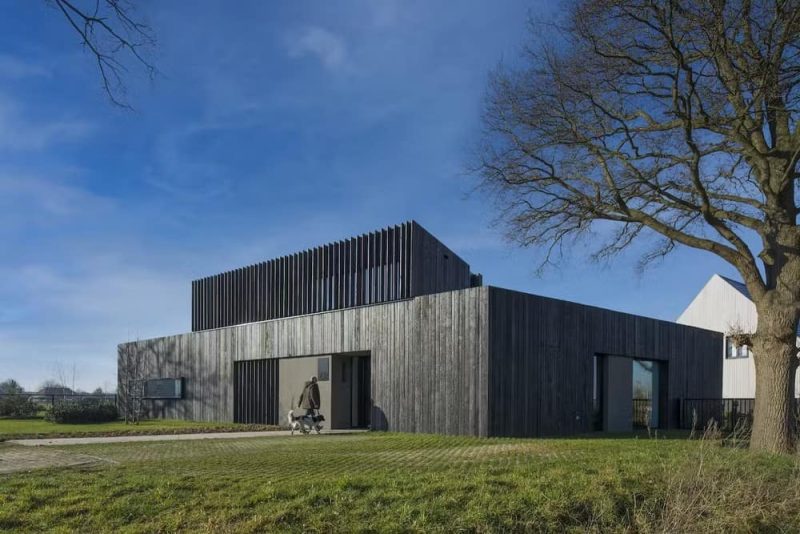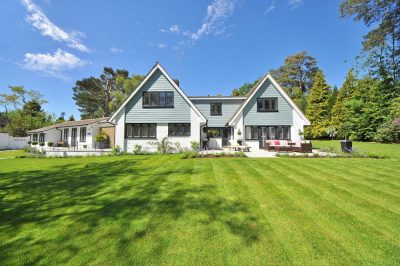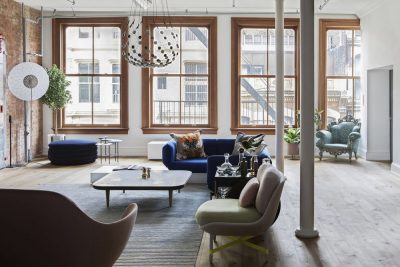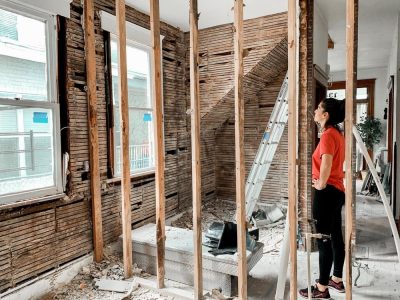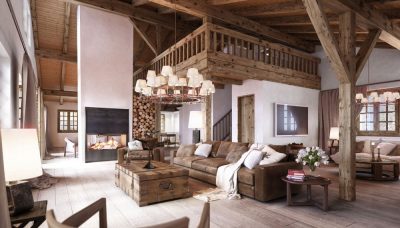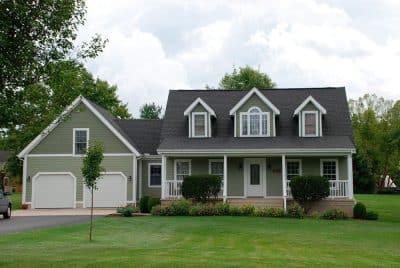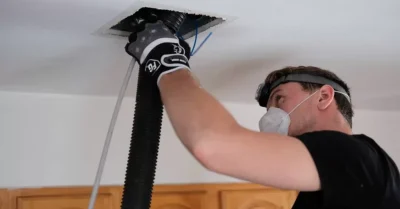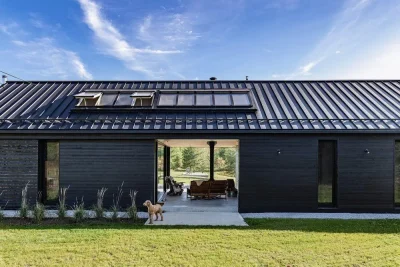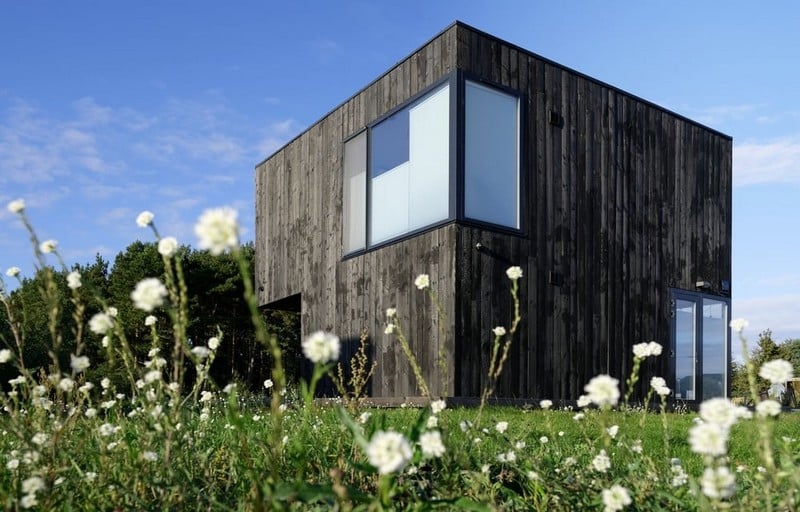
Among traditional Japanese woodworking techniques, few have achieved such global admiration as Shou Sugi Ban. Known for its striking black finish and remarkable durability, this centuries-old practice of burning wood to preserve it has evolved from a practical solution for protecting rural homes to a refined architectural expression of texture, depth, and impermanence.
Today, architects and designers are rediscovering its unique combination of aesthetics and function — a sustainable, low-maintenance material with deep cultural roots and timeless visual appeal.
What Is Shou Sugi Ban
Shou Sugi Ban is the Western term for the Japanese technique Yakisugi (焼杉), meaning “burned cedar.” The name derives from sugi, or Japanese cedar (Cryptomeria japonica), a softwood prized for its straight grain and natural oils. Although often translated literally as “charred wood board,” Shou Sugi Ban is actually a misinterpretation of the Japanese phrase — yet it has become the accepted name worldwide.
At its core, the process involves charring the surface of the wood with fire to create a thin carbonized layer that acts as a natural shield. The technique does not incinerate the timber; it modifies only its outer fibers. During charring, the resins within the wood are drawn to the surface, sealing its pores, while the heat destroys nutrients that attract mold or insects.
Once cooled, the blackened layer is brushed to remove loose soot, revealing a rich, shimmering texture reminiscent of obsidian or reptile scales. Depending on the level of brushing and oiling, the final tone can vary — from deep matte black to silver-gray or dark brown, with visible wood grain.
Beyond aesthetics, this carbonized layer provides long-term resistance to water, UV exposure, and decay without synthetic coatings or preservatives. It is both an art form and a performance-driven surface treatment, valued for how it transforms and protects wood naturally.
History and Origin
The origins of Yakisugi trace back to Japan’s Edo period (1603–1868), when fire was a constant threat to wooden settlements. Builders observed that boards recovered from accidental fires tended to resist rot and insects better than untreated ones. This insight led to the intentional, controlled burning of cedar siding to extend its lifespan.
Cedar was the preferred wood for two reasons: it was abundant in Japan and, when charred, formed a stable, uniform layer of carbon. Yakisugi became especially popular in humid coastal regions, where the combination of salt air and moisture demanded extra protection for homes.
The process also reflected a cultural philosophy: fire, though destructive, could purify and protect. By “sacrificing” the outer layer of wood to the flame, craftsmen imbued the material with symbolic endurance and resilience — a theme deeply aligned with Japanese aesthetics of wabi-sabi, the beauty of imperfection and impermanence.
As Japan industrialized in the 20th century, Yakisugi declined. Mass-produced paints and chemical sealants replaced the slow, hand-crafted method. Yet, in recent decades, environmental awareness and renewed interest in traditional craftsmanship have revived the technique worldwide.
Contemporary architects — from Kengo Kuma and Terunobu Fujimori in Japan to numerous studios across Europe and the U.S. — use Shou Sugi Ban as both a sustainable material choice and a poetic visual statement, blending modern minimalism with centuries-old wisdom.
How the Technique Is Done
While the process can vary by craftsman or region, authentic Shou Sugi Ban follows several key stages, balancing precision, timing, and artistry.
1. Wood Selection
Traditionally, Japanese cedar (sugi) was used, but modern builders also apply the technique to pine, spruce, cypress, and even hardwoods like oak or ash. Softer woods generally yield more even burns and deeper textures. The boards must be thoroughly dried, clean, and knot-free to ensure consistent carbonization.
2. Controlled Charring
The hallmark of Yakisugi is its controlled flame exposure.
In the traditional “chimney” or “flue” method, three boards are tied together lengthwise into a triangular tube. Fire is introduced from one end, creating an internal draft that evenly chars the interior faces within minutes. Once the desired depth of burn (typically 2–3 mm) is reached, the boards are separated and cooled.
Modern approaches often rely on propane or butane torches, allowing finer control over burn intensity and pattern. This flexibility makes it possible to achieve subtle tonal variations — from uniform black to gradient transitions revealing the natural grain beneath.
3. Cooling and Stabilization
After the flame is removed, boards are allowed to cool naturally or are lightly sprayed with water to halt combustion. Rapid cooling helps fix the carbon layer in place and prevents cracking.
4. Brushing and Cleaning
Once cooled, the fragile surface soot is brushed away with wire or natural-fiber brushes. This step determines much of the final appearance: heavy brushing exposes more grain and creates contrast, while light brushing preserves a pure black sheen.
5. Oiling and Finishing
Finally, the boards are treated with natural oils — commonly tung, linseed, or camellia oil — to enrich the tone and add a subtle sheen. The oil penetrates the wood, reinforcing its hydrophobic qualities and slowing oxidation of the carbon layer. Multiple coats deepen color and durability.
When done correctly, Shou Sugi Ban siding can last for generations, requiring only occasional re-oiling to maintain its luster and performance.
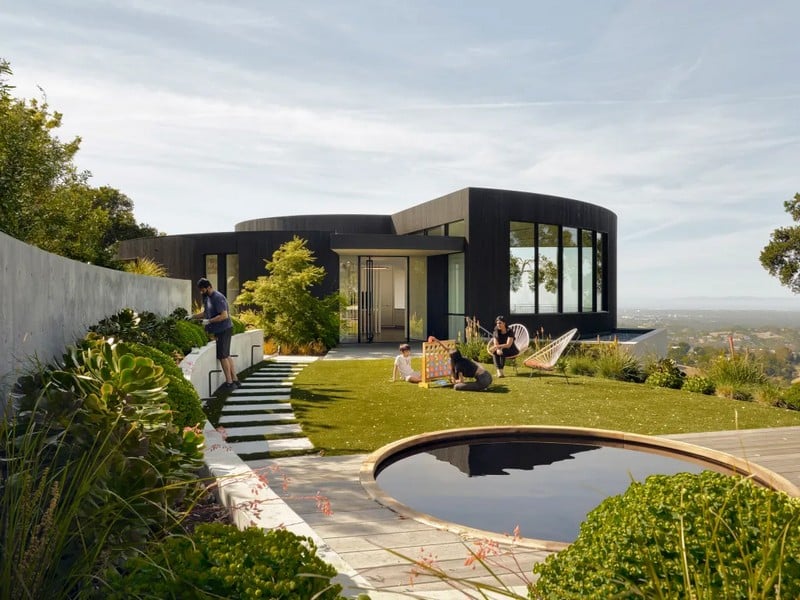
Advantages of Shou Sugi Ban
1. Natural Resistance to Decay and Insects
The charring process destroys sugars and cellulose that feed mold and termites. The resulting carbon layer is inert and unpalatable to pests, reducing biological degradation.
2. Enhanced Water and UV Protection
Carbonized wood resists moisture absorption, swelling, and warping. It also weathers gracefully under sunlight — the black surface subtly fades into elegant grays rather than peeling or blistering like paint.
3. Longevity and Low Maintenance
Properly executed, Shou Sugi Ban cladding can last 80 to 120 years with minimal upkeep. Occasional oiling (every 10–15 years) is sufficient to refresh its protective qualities.
4. Improved Fire Resistance
Paradoxically, pre-burned wood is less flammable. Since the outer cellulose layer has already been carbonized, there is less fuel available to ignite in case of fire.
5. Sustainability and Health
The technique uses no toxic chemicals, paints, or sealants — just fire, wood, and natural oil. This makes it safe for the environment and for occupants sensitive to VOCs.
6. Aesthetic and Tactile Beauty
Each board is unique. Depending on burn depth, brushing, and oiling, textures can range from subtle satin to heavily cracked, reptilian patterns. This handcrafted irregularity adds depth and authenticity, ideal for modern minimalist or rustic designs.
Disadvantages and Limitations
Despite its many virtues, Shou Sugi Ban is not a one-size-fits-all solution. It carries some practical considerations:
1. Cost and Labor Intensity
Authentic Yakisugi is time-consuming. Between burning, brushing, and oiling, production costs can exceed those of standard stained or treated siding.
2. Skill Dependency
Achieving uniform burns without damaging the wood requires experience. Over-burning can cause brittleness or warping.
3. Surface Fragility
The charred layer, while protective, is delicate. It can shed fine black dust or mark hands if left unoiled, especially during installation.
4. Climate Limitations
In extreme climates — heavy snow, strong sun, or salty air — the outer carbon layer may erode faster and require more frequent maintenance.
5. Visual Commitment
The bold, dark aesthetic doesn’t suit every context. Pairing it with other materials and colors must be deliberate to avoid an overpowering visual effect.
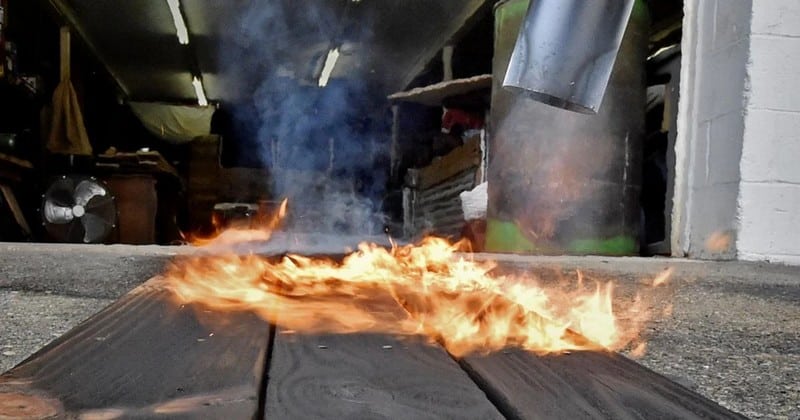
Applications in Architecture and Design
Shou Sugi Ban has found a second life in contemporary architecture, bridging tradition and innovation. Its uses include:
- Exterior cladding and siding for houses, cabins, and cultural buildings
- Fencing, gates, and pergolas where weather resistance is crucial
- Interior wall panels and ceilings for dramatic visual contrast
- Furniture, doors, and cabinetry for texture and individuality
- Landscape structures, such as benches or trellises, blending with nature
In modern projects, charred wood often complements materials like concrete, glass, and corten steel, introducing warmth and organic character to otherwise minimal compositions.
Design Considerations
To ensure Shou Sugi Ban performs well and maintains its aesthetic integrity, several design factors should be considered early in planning:
1. Choose the Right Species
Softwoods such as cedar or pine respond best to controlled charring, forming a uniform carbon crust. Hardwoods can work but require greater precision to avoid cracking or uneven burns.
2. Mind the Exposure
Façades facing strong sun or wind should use boards with deeper charring and more frequent oiling cycles. In shaded or protected areas, lighter burns suffice.
3. Combine with Complementary Materials
Pairing charred wood with natural stone, glass, or untreated timber creates balance. The deep matte black surface works best as an accent, not a monotone field.
4. Plan for Longevity
Even though it’s low-maintenance, include re-oiling intervals in the building’s lifecycle plan. A decade-based schedule helps preserve texture and water resistance.
5. Respect Its Symbolism
In Japanese tradition, Yakisugi embodies renewal and endurance — the idea that destruction leads to preservation. Integrating this meaning into design narratives adds cultural depth beyond material selection.
6. Source Responsibly
For large-scale use, choose certified wood from sustainable forests or suppliers specializing in genuine Yakisugi production rather than artificial “burned finishes.”
Conclusion
Shou Sugi Ban is far more than a visual trend — it’s a material philosophy born from Japan’s centuries-old relationship with fire, nature, and craftsmanship. By embracing imperfection and transience, it offers a surface that tells a story, evolving gracefully over decades.
For architects and homeowners seeking both beauty and resilience, charred wood remains one of the rare techniques where tradition and sustainability truly meet — a living testament to how design can endure through transformation.
